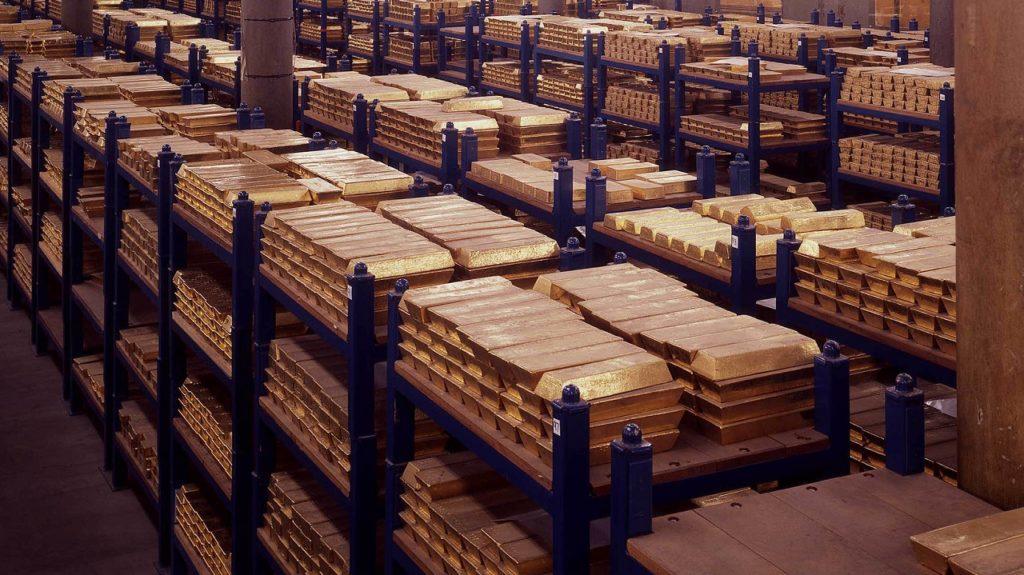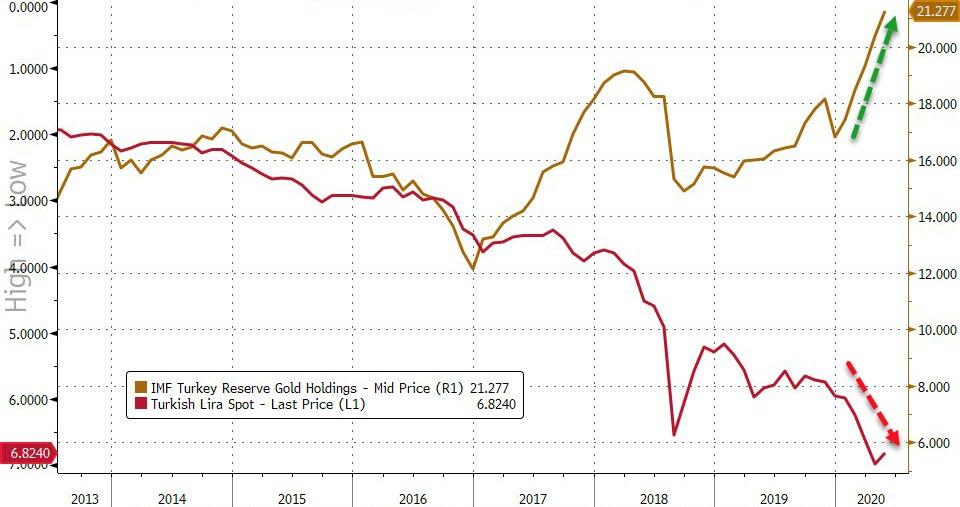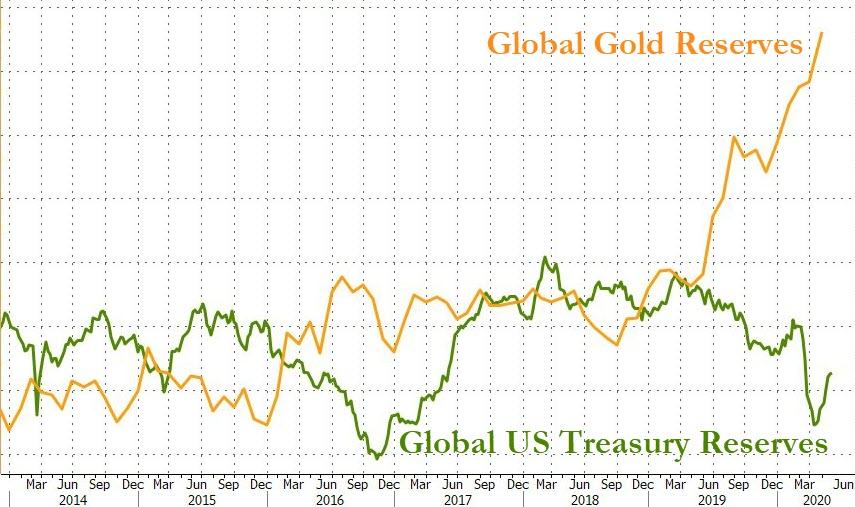Central Banks Added Nearly 32 Tons Of Gold To Reserves In April, Led By Turkey
Tyler Durden
Wed, 06/10/2020 – 06:00
The pace has slowed somewhat this year, but central banks are still buying gold, and the World Gold Council expects central bank demand to continue over the next 12 months.
In April, central banks globally added another net 31.6 tons of gold to their reserves, despite Russia following through on its commitment to suspend its buying program.
According to the World Gold Council, the lower rate of purchases was entirely expected given the strength of central bank buying both in 2018 and 2019.
On the year, central banks have added a net 142 tons of gold to their reserves. This is off the near-record pace of purchases last year.
Central bank demand came in at 650.3 tons in 2019. That was the second-highest level of annual purchases for 50 years, just slightly below the 2018 net purchases of 656.2 tons. According to the WGC, 2018 marked the highest level of annual net central bank gold purchases since the suspension of dollar convertibility into gold in 1971, and the second-highest annual total on record.
The World Gold Council bases its data on information submitted to the International Monetary Fund.
Turkey drove purchases yet again in April. The Turks added 38.8 tons of gold to its hoard, bringing its total reserves to 524 tons. The Turkish lira dropped to near all-time lows in March and the Turkish central bank is frantically trying to backstop its currency. Meanwhile, Turkey is selling dollars. According to Bloomberg, state banks sold roughly $1.1 billion of foreign currency in just two days last month.
Serbia continued to buy small amounts of gold, adding another 0.1 ton. The Serbs bought 9 tons of the yellow metal back in October 2019 and have added at least 0.1 ton to its reserves every month since.
We saw a little bit of selling in April as well. Kazakhstan reduced its gold reserves by 4.1 tons and Uzbekistan’s holdings declined by 2.2 tons. Russia saw a modest drop of 0.4 tons in its reserves.
In March, the Central Bank of Russia announced it planned to suspend gold-purchases for the time being, effective April 1. But there is already pressure on the bank to resume purchases. In early April, Russian banks asked the Central Bank of Russia to resume buying gold for its reserves as gold exports were hobbled by the coronavirus pandemic. In a letter released on April 29, the Russian central bank said it did not see any need to resume buying gold at the time, but added it would continue to monitor the situation in both the global gold market and the banking sector.
For the seventh straight month, the People’s Bank of China did not report any gold purchases. It’s not uncommon for China to go silent and then suddenly announce a large increase in reserves.
Many analysts believe China holds far more gold than it officially reveals. As Jim Rickards pointed out on Mises Daily back in 2015, many people speculate that China keeps several thousand tons of gold “off the books” in a separate entity called the State Administration for Foreign Exchange (SAFE). Given the political dynamics and the ongoing trade war, it seems unlikely the Chinese suddenly stopped increasing their gold reserves in 2016.
Does the slowdown in purchases in recent months signal an absence of central bank demand going forward? The World Gold Council doesn’t think so.
As we noted in our Q1 2020 Gold Demand Trends report, the case for central banks holding gold remains strong. Especially considering the economic uncertainty caused by the COVID-19 pandemic.”
The WGC 2020 Central Bank Survey found that 20% of central banks globally plan to expand their gold holdings in the next 12 months.
Factors related to the economic environment – such as negative interest rates – were overwhelming drivers of these planned purchases. This was supported by gold’s role as a safe haven in times of crisis, as well as its lack of default risk.”
One thing is clear, the trend towards precious metals reserves continues…


